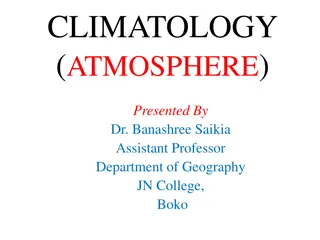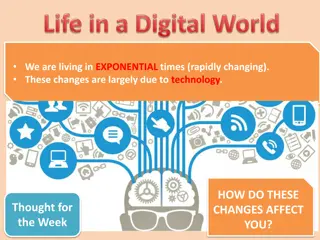Eerie Atmosphere: Unveiling Mysterious Settings
Dive into the world of creating atmosphere and tension in writing by exploring the use of descriptive language, figurative expressions, and sensory details. Learn how to craft a mysterious and spooky atmosphere in a story through vivid descriptions and emotive vocabulary, as exemplified in a deserted house setting. Discover the art of engaging readers with sensory experiences to build tension and suspense.
Download Presentation

Please find below an Image/Link to download the presentation.
The content on the website is provided AS IS for your information and personal use only. It may not be sold, licensed, or shared on other websites without obtaining consent from the author.If you encounter any issues during the download, it is possible that the publisher has removed the file from their server.
You are allowed to download the files provided on this website for personal or commercial use, subject to the condition that they are used lawfully. All files are the property of their respective owners.
The content on the website is provided AS IS for your information and personal use only. It may not be sold, licensed, or shared on other websites without obtaining consent from the author.
E N D
Presentation Transcript
WEDNESDAY 29THAPRIL 2020 WALT: CREATE ATMOSPHERE AND TENSION IN OUR WRITING WILF : I CAN DESCRIBE A MOOD OF A SETTING I CAN USE THE FIVE SENSES IN MY WRITING I CAN USE FIGURATIVE LANGUAGE IN MY WRITING
WHAT IS ATMOSPHERE Atmosphere in writing is the feeling, emotion, or mood that an author creates in a story through descriptive language. Many different elements contribute to atmosphere: the choice of words and setting that the author chooses, the descriptions of people and things, the way that characters speak to each other, and so on. The first paragraph of a play, short story, or novel, will usually establish atmosphere almost immediately; it is important for the reader to know if he or she is getting immersed into a comedy, tragedy, fantasy, or any other genre.
WHAT IS THE ATMOSPHERE LIKE IN THE STORY? The atmosphere in the story is mysterious spooky atmosphere. The author achieves this through many different ways. First is the use of the caravan being near a pylon. As a pylon carries electricity and is seen as a very dangerous place and is not usually a place many people go. Next is how the author describes the caravan and the pylon in the story. He uses adjectives and figurative language to show that they are abandoned, for example he describes the pylon as red, brown and rusty. He then describes the caravan as abandoned by if you go past, you ll just see a small patch of overgrown land under the pylon, a mess of brambles and nettles that smothered the van. It was damp inside and the windows were smeared with green grime. Moss clung to its wheels. The author also describes the weather as not being very nice. For example he says that trees were like crazed zombies crashing widely. All of this helps to create atmosphere in the story and helps the reader vision a spooky place.
HOW TO CREATE ATMOSPHERE IN A STORY To create atmosphere in a story an writer must use: Descriptive and emotive vocabulary Figurative language- similies, metaphors and personification (this is really important) Short sentences Description using all the senses, see, hear, smell, feel and taste
MODEL At the end of a eerie dirt track, trees parted as if they were opening their hands, to reveal an derelict, rundown house. There were no signs of life. There were no birds flying in the sky, no stray cats hunting for mice. The house was completely empty. All you could hear was the window whispering through the trees. The windows were covered up and the paintwork had faded, suggesting that no one had lived here for years. As I edged closer to the house shivers ran down my spine, it was if my body was telling me I shouldn t be there warning me not to venture any further. Suddenly, a spine chilling sound emerged from the house. Was it the cry of a child? Or was it the warnings of a mad person?
TASK Using the same picture and the model to help you, write a description of the house shown in the picture creating atmosphere. Remember you must use: Descriptive and emotive vocabulary Figurative language- similes metaphors and personification (this is really important) Short sentences Description using all the senses, see, hear, smell, feel and taste























